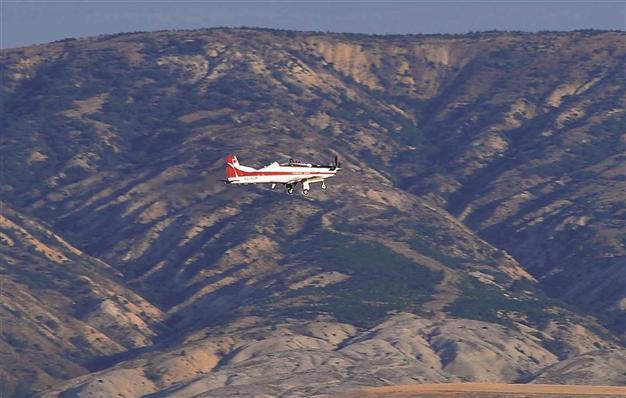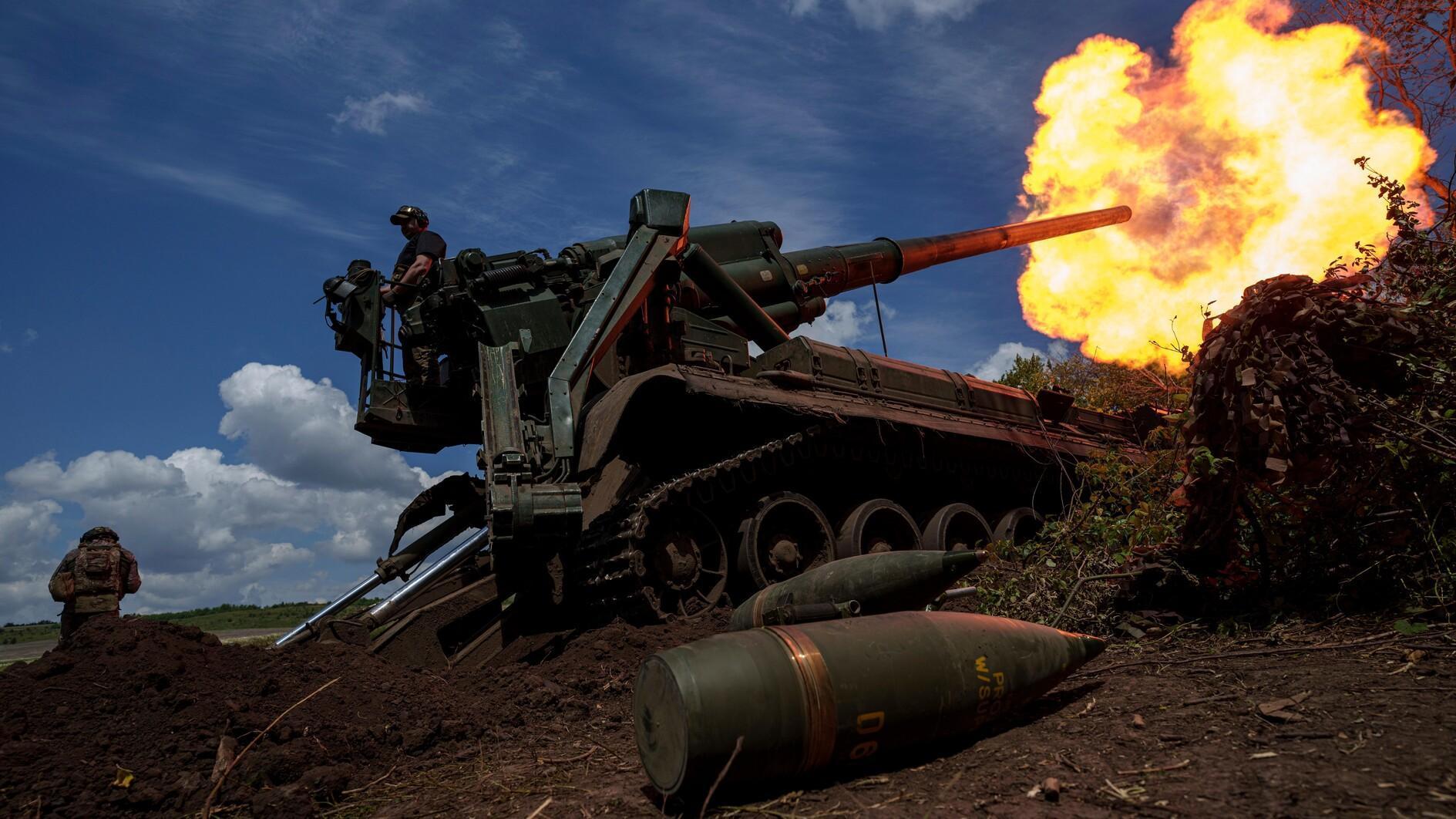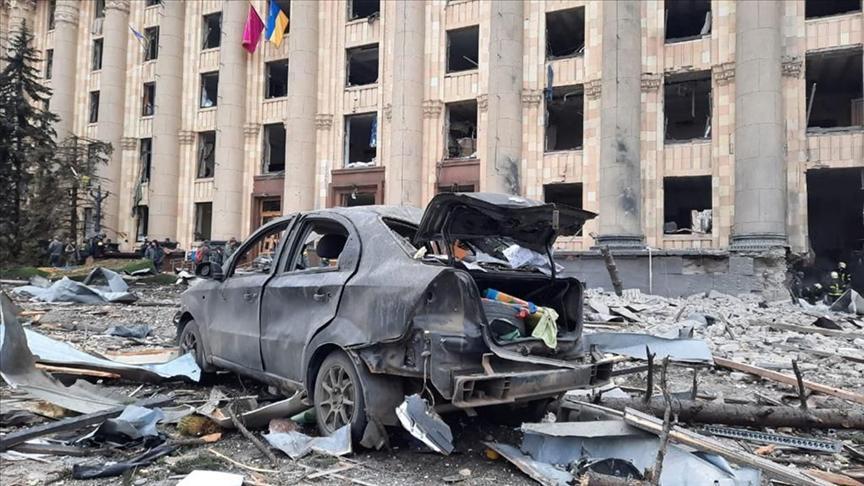Turkey aims for slimmer and better trained army
Burak BEKDİL

A domestic basic trainer aircraft, Hürkuş (picture), is scheduled to have its maiden flight next year. TAI has been manufacturing four prototypes of the Hürkuş. DHA photo
Turkey’s military is shrinking in size at a time of increasing domestic and local security challenges. The military command thinks the best way to challenge back is better training, both in gear and doctrine.An earlier governmental decision to shorten military service will mean about 100,000 fewer soldiers for NATO’s second biggest and mostly conscript-based military. That move was consistent with plans to gradually switch to a semi-professional force structure. But there is a problem. The Turkish military may not be able to lure in as many professionals as it thinks it should.
Earlier this year, Defense Minister İsmet Yılmaz said in response to a parliamentary query that in January and February of this year alone a total of 163 military pilots quit the Air Force. Insiders say most of those departing were the most experienced.
“We are aware of a need for better training. We need new, advanced gear, and an intensified training concept,” said one senior military official.
Last week, Turkey launched an F-16 simulator training center at a high-profile ceremony attended by Yılmaz, Undersecretary for Defense Industries (SSM) Murad Bayar and Air Force Commander Akın Öztürk. The project, launched in 2009 by military software specialist Havelsan, will shift a majority of flight training to simulators rather than real aircraft, according to officials.
The program also aims to substantially save flight costs, minimize crashes during training and make flight training available at all times, independent of weather conditions.
Competition for new trainer aircrafts
As a sign of new emphasis on training concept, Turkey’s defense procurement agency, SSM, opened a new competition in November for the acquisition of 52 new basic trainer aircraft, also known as “screeners.” These aircraft will be used to determine whether a new graduate is fit to continue on with flight training.
The planned screeners will replace an ageing fleet of SF 260 primary trainers assembled in the early 1990s under an Italian license by the Turkish Aerospace Industries (TAI) in Ankara.
Meanwhile, TAI officials said the Air Force had silently phased out a fleet of nearly 50 F-5 lead-in trainers which Israel’s Elbit had upgraded and delivered in the early 2000s under a nearly $150 million contract. TAI is now upgrading nearly 60 T-38s to replace the F-5s and the older T-38s.
Also in the trainers fleet, the Turks have 41 KT-1 supplied by the Korean Aerospace Industries under a 2007 contract. But the Turks want to produce their own basic trainer rather than buy more from the Koreans.
Recently, a domestic basic trainer aircraft that Turkey designed and developed won an initial flight certificate from local authorities. Immediately after that, on Sept. 26, Turkey’s top body that oversees procurement decisions, the Defense Industry Executive Committee, gave the go-ahead for the serial production of the Hürkuş, also by TAI.
Hürkuş versions
The Hürkuş is scheduled to have its maiden flight next year. Under a 2006 contract, TAI has been manufacturing four prototypes of the Hürkuş for a round of tests. The first prototype successfully went through engine tests in February, the second is being tested for static durability and cabin pressure, the third is being assembled, and the fourth will be tested for metal fatigue.
The two-seater Hürkuş will be a trainer with a lifespan of 10,500 flight hours, or a 35-year service life. The turboprop aircraft has a 1,600 horsepower engine that can fly at an altitude of 10,577 meters and at a maximum speed of 574 kilometers per hour.
The Hürkuş will be equipped for day and night flying as well as basic pilot training, instrument flying, navigation training, weapons and formation training. The aircraft will have good visibility from both cockpits with a 50 degree down-view angle from the rear cockpit, ejection seats, an on-board oxygen generation system, an environmental control system, an anti-G system, and high shock absorbing landing gear for training missions.
The Hürkuş will come in four variants. The Hürkuş-A is a basic version that has been certified with EASA according to CS-23 requirements. It is intended for the civilian market.
The Hürkuş-B is an advanced version with integrated avionics including a mission computer, and cockpit avionics layout similar to F-16 and F-35 fighters. The Turkish Army is considering an initial order for 15 aircraft.
The Hürkuş-C is an armed version for the close-air support role will have a maximum weapons load of 3,300 pounds. The Turkish Army has expressed interest in the Hürkuş-C to provide support for its attack helicopters.
With the Coast Guard version, TAI plans to offer another version of the Hürkuş to support the Turkish Coast Guard’s maritime patrol activities. The aircraft’s back seat would be occupied by an operator for a forward-looking infrared sensor.
Military officials say that by 2017 the Turkish trainer fleet will consist of the screeners Ankara now intends to buy, KT-1, the Hürkuş, the upgraded T-38s (T-38Ts) and the F-16s. By 2025, the fleet will have the screeners, the Hürkuş, a domestic trainer to be designed and developed for the fighter jet Turkey intends to build, the TF-X and a combination of the F-16s, TF-Xs and the F-35s.
















